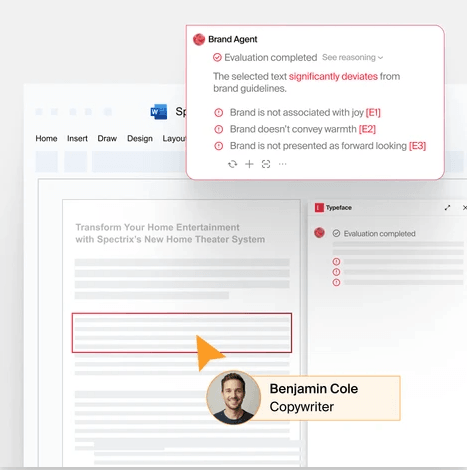AI at Work
Common Content Marketing Mistakes You Can Avoid with Generative AI

Ashwini Pai · Senior Copywriter
June 13th, 2025 · 10 min read

Even well-resourced marketing teams run into roadblocks that prevent them from getting the most out of their content strategy. From disconnected approval workflows and personalization challenges to neglecting existing content and failing to communicate a strong brand POV, the challenges can be numerous.
If these sounds familiar, generative AI is here to remove the obstacles that keep your team from creating content that connects, at scale. Here are the common content marketing mistakes a Gen AI marketing platform can help enterprise marketing teams solve.
Creating safe but unmemorable content
Not getting more out of existing content
Not scaling personalized experiences
Not fully optimizing enterprise visual strategy
Letting valuable performance data sit idle
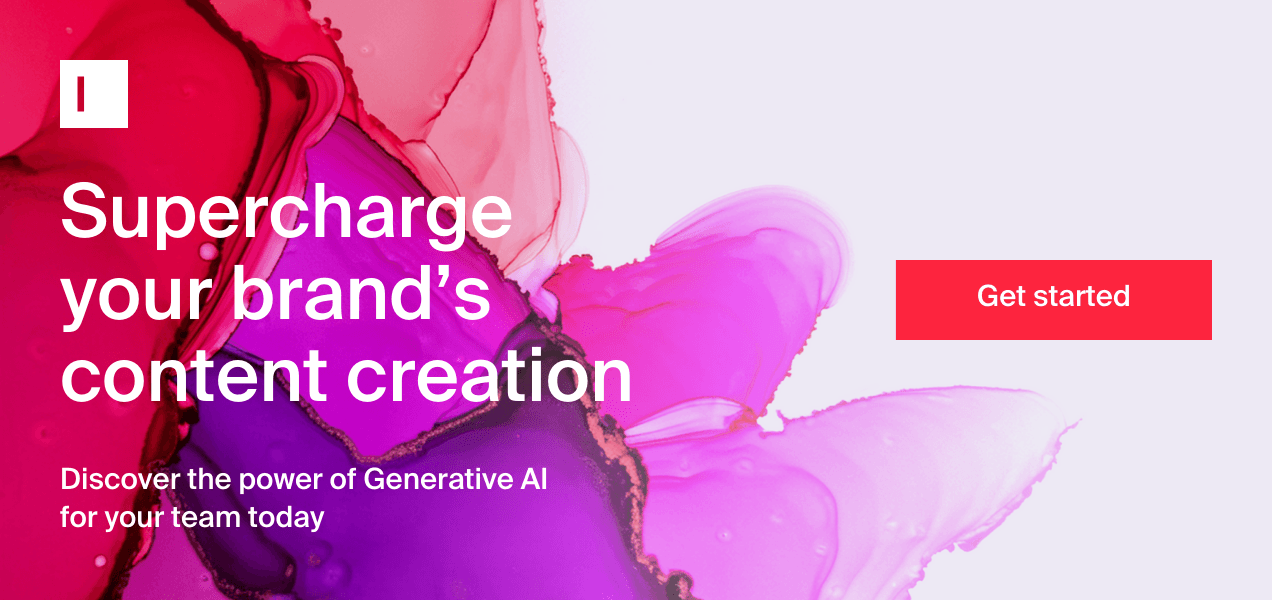
1. Creating safe but unmemorable content
The common wisdom of feeding the content machine comes with a caveat: you might end up being unmemorable. Many enterprises, in their quest to scale content, produce refined, but safe, content that doesn’t stand out. There is a real risk of the proverbial Davids, with their powerful, consistent, and alluring narratives, snatching advantage from the Goliaths.
But with Generative AI, you can convert data into powerful narratives that help your brand stand apart and maintain your advantage.
Here’s how it works when you use Typeface:
Create valuable content from your proprietary data: Connect your CDP, DAM, and knowledge bases into a central Brand Hub that teams can tap to create content that has specificity and insights rather than generic talking points.
Share a strategic narrative consistently: Marketers often struggle to consistently apply brand guidelines, wasting time fine-tuning tone and messaging. Brand Agent automatically validates content against your guidelines and suggests corrections when needed, ensuring a clear, consistent voice that your audience recognizes and trusts.
Address underserved topics or angles that competitors ignore: Your competitors’ blogs reveal the keywords and content angles they’re targeting. Our platform eliminates time-consuming competitor research by automatically surfacing competitors' blog outlines so you can turn missed opportunities into unique, high-performing content.
![Screenshot 2025-04-28 192848.png]()
2. Not getting more out of existing content
Having accumulated vast content libraries, many enterprise teams struggle to maintain and update their existing assets, often focusing on new content creation instead. And that can mean leaving a lot of valuable insights buried in old blogs or resources that could inform other types of content, both on and off your site. The unique problems enterprises face when repurposing content include:
Manual searches: If managing massive content volumes is difficult, manually tagging each asset and searching by metadata is time-consuming and inefficient, making content refactoring a tedious affair.
Time constraints: Providing valuable information in different ways is relatively straightforward. But in some cases — like transforming a long video into short social media clips — it can involve many steps and substantial effort.
Resource constraints: Keeping up with the demand for popular types of content, like video (90% of consumers say they want to see more videos from brands), can be challenging when you’re dealing with limited video production resources.
Content repurposing isn’t just about increasing content volume. It’s also about reaching new audience segments and strengthening topical authority to help boost search rankings. If you’ve got the strategy down, you can execute it faster with our generative AI platform.
Here’s what you can do:
Transform video content into engaging stories: Video Agent converts lengthy videos into bite-sized social clips and sizzle videos within minutes. It understands natural language (rather than relying on metadata tags), analyzes video briefs, and creates engaging video clips with effects, calls-to-action, and caption styles that are easily editable even with no prior video editing experience. Watch it in our webinar.
Communicate as needed without starting over each time: Like great old wine in a new bottle, valuable, evergreen content is always at hand to refresh and present to a new audience. Our content repurposing templates speed up the job, converting your existing content to different formats, including blogs, social media posts, and newsletters.
Maintain your brand’s signature across all new content: Typeface creates personalized, on-brand content from the audiences you specify and your brand guidelines. Brand Agent works in the background, ensuring that the new content retains your brand’s tone, terminology preferences, and messaging principles.
3. Not scaling personalized experiences
Enterprise marketers understand the complexity of creating content that speaks to the needs, desires, and values of each customer group.
Achieving true personalization is about diving into huge amounts of customer data and creating both content and visual designs for each group. It’s a challenge for growing businesses but especially so for enterprises with enormous amounts of data and data siloes to boot.
Generative AI offers the scalability required to deliver a personalized experience to every customer group, even at a massive scale. It can analyze and act on data thousands of times faster than us and tailor content to user demographics, preferences, and behaviors.
Implementing personalization at scale starts with customer segmentation, done using the available customer data points, and after deciding on the extent of personalization or what’s known as personalization maturity. Generative AI can not only create content based on broad demographic segments but also use customer insights and feedback to create individualized experiences that increase interactions.
Here's what content personalization at scale using AI looks like:
Automatically adapt each piece of content to the audience: Bring your CDP audiences into the dynamic Brand Hub, where all your teams can access up-to-minute profiles to generate content uniquely tailored to each one. Automatically adapt multiple content pieces to different profiles, driving scale and reducing manual efforts.
Personalize content across formats: From blogs, emails, and social media posts to push notifications, sales pitches, and taglines, align all your marketing materials to the unique needs of your audience. Generate personalized content on-demand to effortlessly drive timely, even real-time interactions, on all channels.
Easily experiment with content variations: Generate multiple versions of personalized content to easily test and optimize for better engagement and performance. Our AI learns from your user data and best performing assets to continuously optimize content for different audiences and enhance brand experiences.
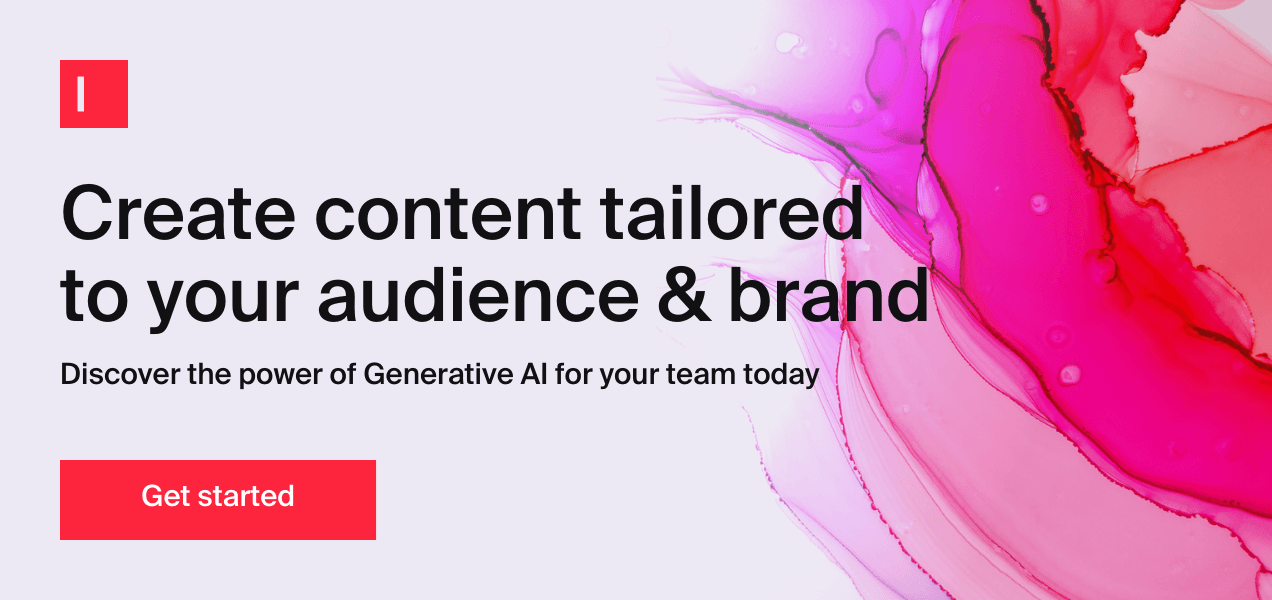
4. Not fully optimizing enterprise visual strategy
Great visuals can dramatically increase engagement and retention, and visual consistency builds brand recognition. Many enterprises make thoughtful decisions about their visual approach based on their audience, brand guidelines, and resource constraints and approval processes.
Even so, there are missed opportunities due to challenges such as:
Bottlenecks in approval processes
Stretched out design teams
High volumes of content needing visuals
Maintaining brand consistency across large organizations or multiple brands under the same organization
Generating visuals using AI is a potential solution for enterprises looking to optimize their visual strategy, particularly fashion, beauty, travel, luxury, food and beverages, health and fitness, and luxury brands that rely heavily on imagery as a differentiator.
Here’s what AI visual generation for eCommerce translates to:
Produce at scale: Create visuals as you see or imagine from the comfort of your laptop. Our Inspiration Studio offers image presets or uses your own reference images to generate visuals with your product placements. Save weeks of production time by creating hundreds of visuals in just minutes instead of hours.
Create in popular photographic styles: From symmetrical flat lays and mood lighting to color grading, eye-catching props, and various lifestyle settings and locations, our AI recreates a number of visual styles, reducing reliance on professional design and photography.
Blend products into scenes: Our advanced AI Image Harmonization technology places your products naturally into any scene by adjusting lighting, shadows, reflections, metallic sheen, transparency, and other parameters. To train our AI model in your brand’s visuals, simply upload your product images in various settings.
Preserve product details: AI-generated product images can capture intricate details with remarkable accuracy — so long as they use advanced product preservation. It’s a capability we pioneered to ensure every product detail — logos, shapes, colors, and 3D angles, are accurately represented in all your marketing materials.
Speed up campaign execution: Create product images without the constraints of logistics, resources, and weather conditions. Simplify, accelerate, and lower the cost of image creation for seasonal and location-based campaigns.
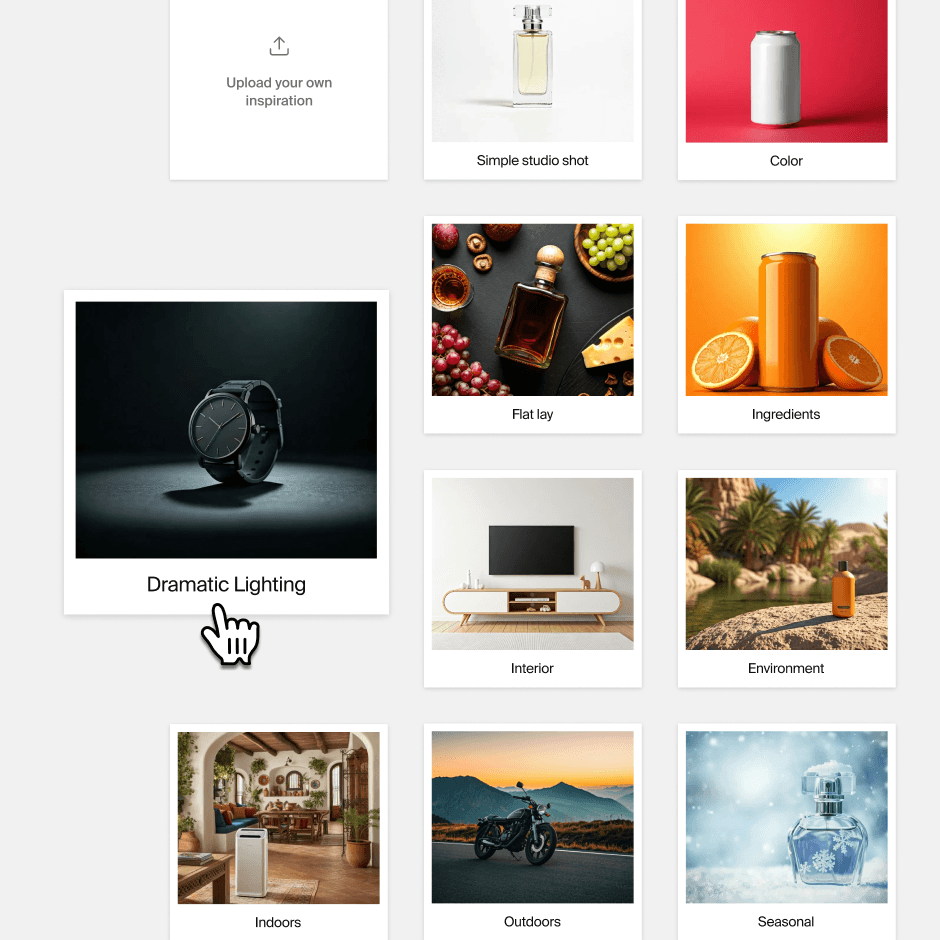
5. Letting valuable performance data sit idle
Enterprise teams often have sophisticated analytics and deep performance data across channels. But turning those insights into meaningful content strategy adjustments can be challenging. Layered approval processes can slow down decision-making and make it difficult to act on what the data is really telling you.
Bringing approval workflows and analytics right where content is created can strengthen collaboration, transparency, and flexibility.
Here are the specifics on how AI can address one of the most common content marketing mistakes of failing to respond quickly to performance signals:
Your content workflows in one place: You can replicate your content creation and approval cycles on our platform. With automated workflows in place, automated notifications across Slack and email, and direct publishing to your CMS and DAM, you can eliminate manual handoffs and jumping between tools, speeding up reviews and campaigns.
Real-time updates with a full record of changes: You can easily track content progress and view a complete history of status updates and assignee changes, maintaining visibility and moving more quickly on reviews while addressing compliance concerns.
Real-time content scoring and feedback: From recommendations on article structure, length, and keyword optimization to scoring powered by Google and Semrush, and always-on Brand Agent validating content against brand guidelines, reviews are more streamlined and actionable.
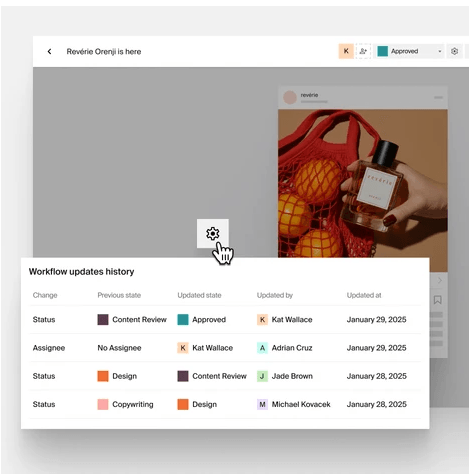
Avoid common content pitfalls with a smarter approach
Viewing generative AI purely as a content production tool underestimates its potential to transform the entire content creation process.
While AI can create inspiring content and speak to the needs of different audiences, it does its best work with your audience data and asset training guiding it. Further, workflows that bring AI content production and approvals in one place create an agile, egalitarian, and accountable environment.
With Typeface, you can overcome common content marketing pitfalls, adapt to resource constraints, extract maximum advantage from your customer data, and free your teams from repetitive tasks.
To learn more, get a demo or contact sales.
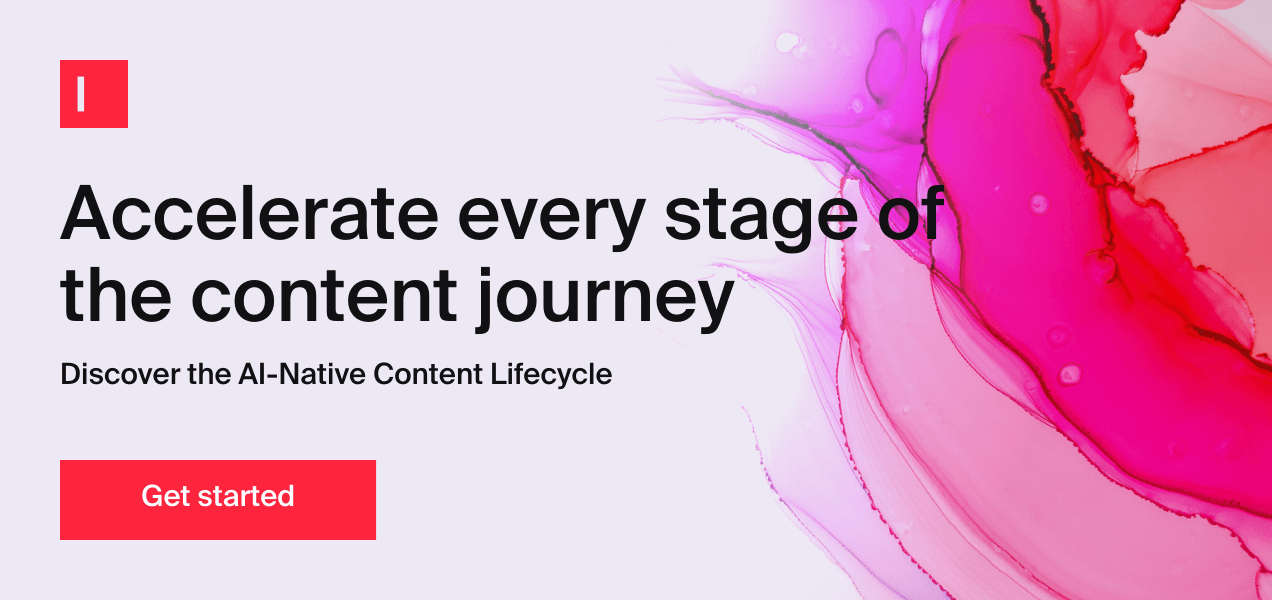
Share
Related articles

AI at Work
Building A Global Content Repurposing Strategy with AI for Multiple Markets (with Real Examples)

Akshita Sharma · Content Marketing Associate
May 21st, 2025 · 13 min read

AI at Work
Image Personalization: Best Practices for Personalizing Images to Target Audiences

Matthew Loewengart · Strategic Solutions Architect
May 14th, 2025 · 14 min read

AI at Work
Does Using AI for SEO Content Creation Affect Your Rankings? Here Are Some Myth Busters

Neelam Goswami · Content Marketing Associate
May 23rd, 2025 · 12 min read
